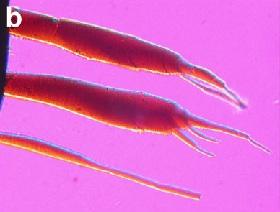Using AI to control energy for indoor agriculture
30 September 2024
Published online 26 August 2010

Copepod are small crustaceans and among the most abundant and diverse life forms on Earth. They live in nearly every habitat in the world. However, owing to their size and fragility, only a handful of fossilized remains of these creatures, the oldest of which is about 92 million years old, have ever been found.
Researchers from the United States, the United Kingdom and Oman recovered abundant fragments of copepod fossils from a pebble-sized bitumen clast, which is a rock fragment resulting from the breakdown of larger rocks, in eastern Oman. This is the first time that fossils of soft tissue have been found in isolated bitumen clasts. None of the remains were of whole specimens or body parts, but fragments of appendages such as antenna and limbs. The fossils were exceptionally well-preserved, however, showing traces of muscle tissues and bristles.
The fossil record had the oldest known copepods at the early Cretaceous period (146 - 65.5 million years ago). The new fossils, however, are much older. It is now known that crustaceans evolved at least into the late Carboniferous times (359 – 299 million years-ago). Using this data, and building on available divergence dates, the researchers contend that the oldest orders of copepods originate from the Cambrian period (542 – 488 million years ago).
doi:10.1038/nmiddleeast.2010.192
Stay connected: